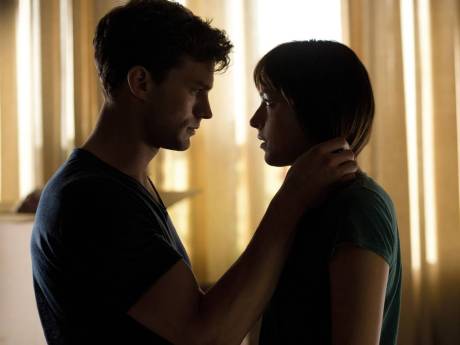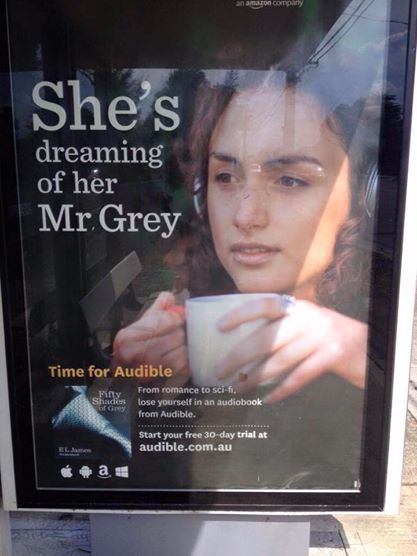My 8 year old gets it.
March 18, 2015
This morning, on my way to school with my 12 year old, I was talking to her about how frustrated I was that over the last two weeks or so, there has been constant reporting on how one man followed another man back to his place and stabbed him to death. Every night, another report about the case. I commented to my daughter that there should be more reports about the 24 women who have been murdered so far, this year (11 weeks) – two murders per week here in Australia.
As we were having dinner tonight The Project DID do a story (we both shot a look at each other), discussing that although the numbers of murders have come down in general of the years, it is a different and alarming story when looking at the increasing statistics of violence against women – with murder obviously being the worst outcome but that a very high percentage of women (87%) experience abuse at least once in their lives; whether it be verbal, physical, at home or out in the streets. The discussion also mentioned how the conversation has to be turned away from victim blaming – although nothing was said about the fact that it predominantly occurs at the hands of a male.
As a society we seem to tip-toe around that glaring fact. Why? I don’t know. Maybe it’s because the discussion generally gets sidetracked with the #NotAllMen arguments and what we should really be dissecting slips away again.
After the story wrapped up, the panelists had a discussion and one of the females said that it angers her that when she goes out into the carpark, she doesn’t feel safe. I can relate to that. Another panelist brought up victim blaming again, saying how we shouldn’t be discussing this issue with statements such as, ‘She shouldn’t have been out getting a taxi at 2am’.
At this moment, my eight year old daughter – who just caught that last sentence – said something along the lines of, ‘But she should be alright because the taxi driver is with her.’
I responded, “These sort of things can happen anywhere and by anyone. What happens if it’s the taxi driver that hurts her?”
She said, “Well then it wouldn’t matter if she got the taxi at night or in the day because that person is a bad person and would do it anyway. So people shouldn’t say that about what time it was.”
Exactly. My eight year old makes a simple deduction – bad people will do bad things regardless, so it’s not the victim’s fault. I was chuffed with her simple logic.
I started to think about what she said in terms of ‘bad people’. If, statistically, violence against women – all violence, actually – is predominantly done by men (in the United States 90% of murders are committed by males) – how are we to curb this? I’d say that making ‘jokes’ about it, is not the solution; in fact it’s incredibly damaging.
After dinner, I opened up my laptop and lo and behold, one of the most disgusting and dangerous slogans Wicked Campers have (which I thought they had removed) is still being used (Seen in Darwin on Feb 25 2015):
When violence against women is used as a joke, it only does two things:
1. Creates a sense of permission to feel that women are lesser beings to be violated and hurt – and for the wrong person (like my daughter mentioned) – enact on those sentiments;
2. It creates a sense of dread and fear for women to navigate through this world.
Question #226: Can we please acknowledge that none of this is a joke?
Simply, we are fearful. Our daughters are in danger because society keeps claiming Freedom of Speech, over their – our – safety.
Just last year, a Townsville woman (irrelevant) posed for this image that was for her step-mother’s car – again claiming it was a joke:
How is it funny to depict a woman tied up with a shovel to bury her? How can we have no compassion for the way this image may trigger women who have endured being tied up – terrorised – trapped – powerless?
I’ll leave you with a post showcasing advice for lads – that includes the following image; amongst other ‘hilarious’ sentiments towards women.
Whilst these types of expression are continually given oxygen to forge perspectives and attitudes, I’m afraid the future is looking bleak for females. One only need look at what’s happening right now – two women a week are being murdered by men.
Question #227: Can a moral line be drawn?
Or is it just business as usual?
Deep Breath
Finding Mr Grey.
February 15, 2015
A while back, I had a chin wag with students about the fine line that is present in many a discussion about females – in that case, their dress. A recent example has been the great deal of to-ing and fro-ing over the release (on Valentines’ Day, no less) of the film, Fifty Shades of Grey. The argument surrounding this narrative has been bugging me in a similar way the aforementioned discussion with my students did.
My understanding of this issue can be put into two simple points: 1. The books sold like wildfire and seemed to have predominantly titillated the ‘housewives of suburbia’ who saw a love story with consenting adults and 2. It brought to the fore, many psychologists, feminists and survivors of abuse, who have presented an alternate and more dangerous perspective; one that looks at a male grooming and trying to utilise complete control of a naïve female; a demonstration of psychological and physical domestic abuse.
I have not read the books and even wrote post at the end of 2012, asking those who had read 50 Shades to write their thoughts, without judgement from me; because I support women and fight for their complete agency to choose and participate in this world with freedom and safety. This novel is simply a great example of where – if anywhere – the line gets drawn between ‘sexy’ and ‘sadistic and sociopathic’. The issue of choice and consent is also smudged for me when grooming is involved as that’s what grooming does – trick people (and children) into thinking something’s OK, when it’s not.
The prevailing argument in its favour is that it’s just a fictional story and is just a fantasy. I completely understand this perspective and think, each to their own. If the sexual escapades of this novel pushed the saucy buttons of women worldwide, then I say, whatever floats your boat. The pro-50 Shaders seem to be more about the steamy, naughty, forbidden [insert own adjective] sex, not so much about the screwed up male (due to his prostitute [of course] mother) ‘discovering’ himself emotionally and physically through Ana.
But the two issues are married together – the psychologically disturbed man, comes with the sex.
So having heard all the arguments in various articles about this relationship and its representation of varying abuse, I simply want to ask:
Question #222: Why him?
Maybe there are women who want to escape their predictable sex lives and find this story does in fact help them do just that. But what about the man himself; not just his skill with a whip?
Maybe there’s also a secret want to have a rich and ‘powerful’ male be a dominant figure, in his expensive suits and play/torture dungeon.
Maybe women like the idea of ‘fixing’ a damaged male – that love will conquer all. That if she stays, he’ll get better – even if it means enduring a controlled and abusive existence .
Is that it?
What if Christian were, let’s say, a newsagent, would there be as much sexual excitement in finding one’s own Mr Grey?
In terms of the story, the sexual awakening would be the same for Ana, wouldn’t it?
What I’ve heard, from friends who have already gone to see the film, is that the sex wasn’t as ‘good’ as in the novel but found other differences. This is from a friend of mine in her 20s:
‘I found it uncomfortable to watch but didn’t find it uncomfortable to read. I’m not easily phased but it was unpleasant. Personally I enjoyed the development throughout the series. It was an interesting read. But seeing it in film was sort of next level. It was basically porn. The sex scenes were not overly graphic but the violence was too much. It made me feel sad.’
Isn’t the following image from the film, eerily similar to the very real Julian Blanc many found to be abhorrent in his behaviour towards women. The thought of being grabbed by the neck chills me. That’s because I have been grabbed like that. But it’s still not the reason all this bothers me.

On one hand, Rosie Waterline wrote the following review for Mamamia, where she was shaken by what she saw and left the cinema nearly in tears, through to Mia Freedman’s review with her opposing take. One quote stood out in Mia’s piece, that came from a friend of hers:
‘If some women view Christian as a catch – that’s disturbing but it’s their call. The value of the books and the film is the accompanying conversation about what a healthy relationship looks and feels like. A healthy relationship doesn’t involve your partner dictating what you wear or eat. But the author isn’t writing about a healthy relationship! It’s the story of a messed up relationship!’
The first line encapsulates the problem for me – Christian Grey is being touted as a catch and someone to be dreamed of, despite being in a ‘messed up relationship’.
One example (of many) is this bus stop advertisement, of which I got a photo:
This poster grooms – just like Christian Grey – for selfish reasons.
And that’s what bothers me at the core. How this narrative is being sold.
I think it’s dangerous for those – especially our youth, without the experience to know differently – to believe this is a relationship to aspire to – because it has sex in it that supposedly pushes the boundaries of pleasure?
There are adults who enjoy this story; those who enjoy BDSM (even though many are saying it does not accurately portray BDSM correctly); and that’s fine.
But ultimately there’s one thing that seems to be agreed upon:
It’s not a healthy relationship.
Question #223: So why is it being romanticised?
That’s grooming.





